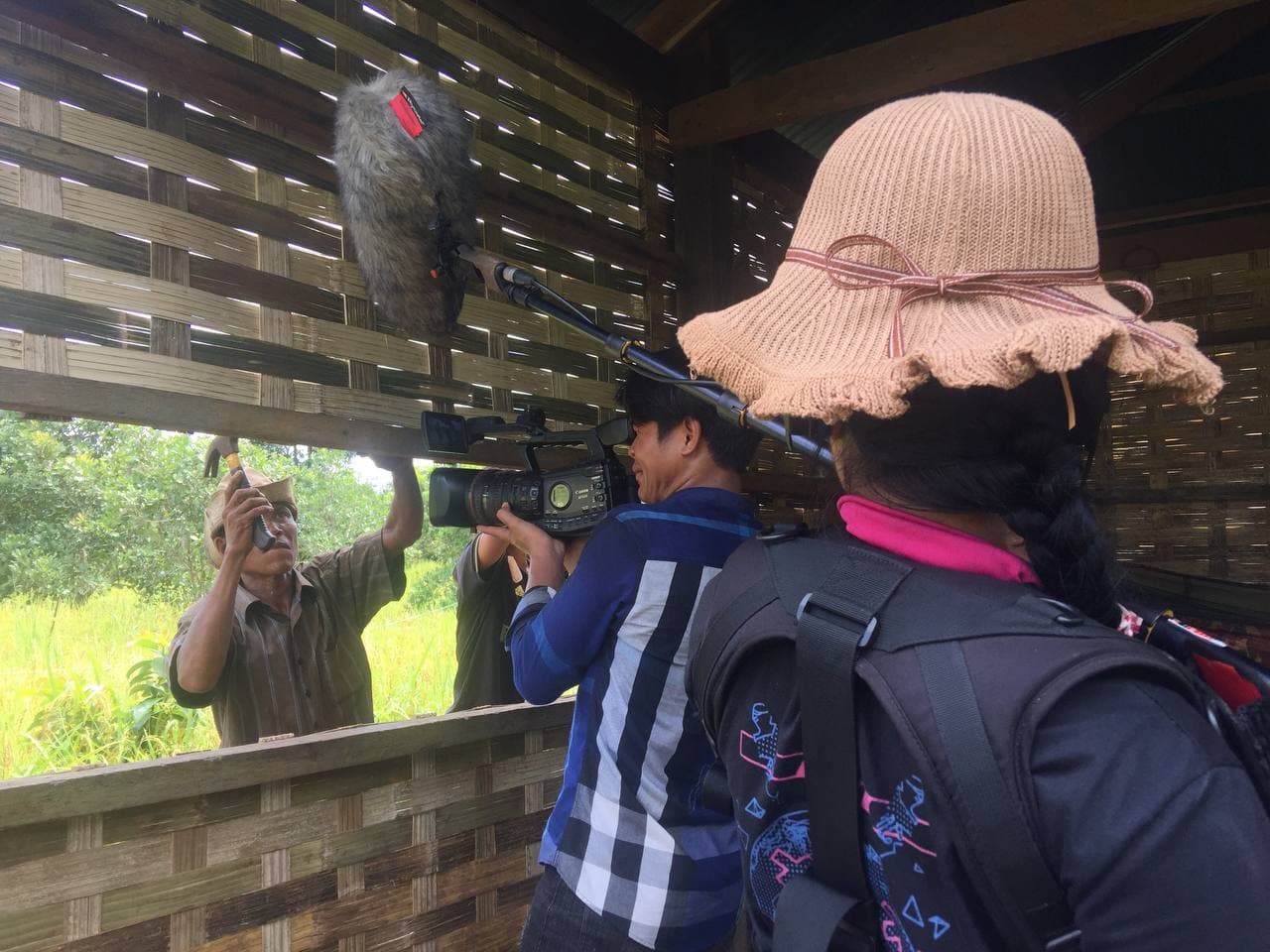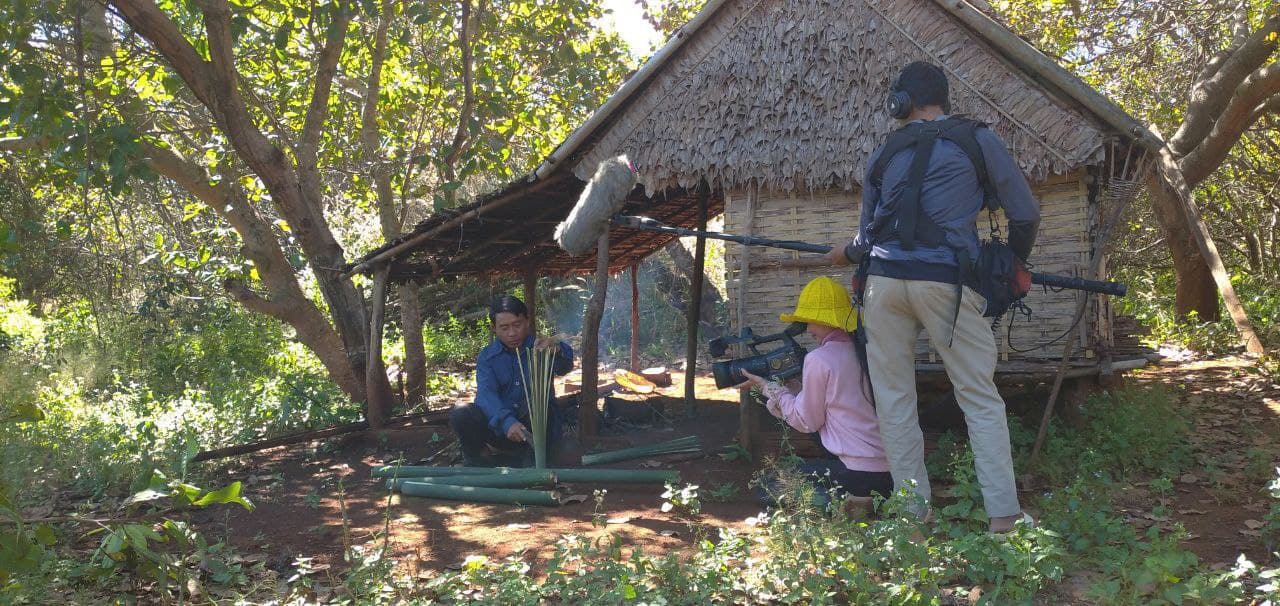Tampuan People on:
[Wikipedia]
[Google]
[Amazon]
The Tampuan (also spelled ''Tompuan'' or ''Tampuon'', ''Tumpoun'', ''Tumpuon'', km, ទំពួន) are an indigenous ethnic group living in northeast








 The Tampuan people are a
The Tampuan people are a
Picture
{{Ethnic groups in Cambodia Ethnic groups in Cambodia
Cambodia
Cambodia (; also Kampuchea ; km, កម្ពុជា, UNGEGN: ), officially the Kingdom of Cambodia, is a country located in the southern portion of the Indochinese Peninsula in Southeast Asia, spanning an area of , bordered by Thailan ...
. Numbering about 31,000, the Tampuan people live in the mountainous Southern and Western portions of the Cambodian province of Ratanakiri. They have their own language of the Mon–Khmer
The Austroasiatic languages , , are a large language family in Mainland Southeast Asia and South Asia. These languages are scattered throughout parts of Thailand, Laos, India, Myanmar, Malaysia, Bangladesh, Nepal, and southern China and are th ...
language family.
Tampuans, along with the other Mon-Khmer groups of the mountains, are referred to as Khmer Loeu
The Khmer Loeu ( km, ជនជាតិខ្មែរលើ ; "upper Khmers") is the collective name given to the various indigenous ethnic groups residing in the highlands of Cambodia. The Khmer Loeu are found mainly in the northeastern pro ...
("Upper Khmer") by the Khmer majority. In English, montagnards
Montagnard (''of the mountain'' or ''mountain dweller'') may refer to:
* Montagnard (French Revolution), members of The Mountain (''La Montagne''), a political group during the French Revolution (1790s)
** Montagnard (1848 revolution), members of t ...
, a designation given to all hill tribes in the former French Indochina
French Indochina (previously spelled as French Indo-China),; vi, Đông Dương thuộc Pháp, , lit. 'East Ocean under French Control; km, ឥណ្ឌូចិនបារាំង, ; th, อินโดจีนฝรั่งเศส, ...
is often used. Though historically their language has been without a writing system, in the last ten years an NGO
A non-governmental organization (NGO) or non-governmental organisation (see spelling differences) is an organization that generally is formed independent from government. They are typically nonprofit entities, and many of them are active in h ...
has overseen the creation of a writing system, based on the Cambodian alphabet
Khmer script ( km, អក្សរខ្មែរ, )Huffman, Franklin. 1970. ''Cambodian System of Writing and Beginning Reader''. Yale University Press. . is an abugida (alphasyllabary) script used to write the Khmer language, the official la ...
. However, fewer than 80% of Tampuans are literate.
Culture







 The Tampuan people are a
The Tampuan people are a mountain people
Hill people, also referred to as mountain people, is a general term for people who live in the hills and mountains.
This includes all rugged land above and all land (including plateaus) above elevation.
The climate is generally harsh, with s ...
, living in communal villages that range from 100 to 400 inhabitants. The villages are often laid out in a square, with a communal house (Tampuan: ), in the center. Today many Tampuan villages have a communal well, volleyball
Volleyball is a team sport in which two teams of six players are separated by a net. Each team tries to score points by grounding a ball on the other team's court under organized rules. It has been a part of the official program of the Sum ...
court, or rice mill in the center as well. In addition to a village home, most Tampuans have a second residence on their farm.
Houses are built on three- to 6-foot-tall () stilts to catch cool breezes. The walls, floor, roof and doors are made of split woven bamboo. Normally, houses are rectangular in shape, averaging five meters by three meters. Today, many rich Tampuans build wooden houses with corrugated steel roofs, a mark of luxury. In some areas, Tampuans live in communal longhouses that can be up to in length.
Family structure
Tampuans have amatrilineal
Matrilineality is the tracing of kinship through the female line. It may also correlate with a social system in which each person is identified with their matriline – their mother's lineage – and which can involve the inheritance ...
system of marriage, with the family name and inheritance passing through the mother’s side of the family. Normally, Tampuans marry between the ages of fourteen and eighteen. In accordance with tradition, the young couple lives with and serves the family of the bride for three years, and then moves to serve the grooms family for an additional three years. At this point, the young couple is considered to be of age, capable of starting their own farm. Bigamy
In cultures where monogamy is mandated, bigamy is the act of entering into a marriage with one person while still legally married to another. A legal or de facto separation of the couple does not alter their marital status as married persons. I ...
is tolerated but not common.
The average married Tampuan woman bears six to eight children in her lifetime, but due to high infant mortality rates and poor medical care, fewer than six usually survive to adulthood.
Diet
The Tampuan diet consists almost entirely of rice, supplemented by fish or stewed vegetables. Though Tampuans may raise chickens, pigs, dogs, cows, and water buffalo for food, the meat is rarely eaten apart from an animistic religious sacrifice. Tampuans also usecrossbow
A crossbow is a ranged weapon using an elastic launching device consisting of a bow-like assembly called a ''prod'', mounted horizontally on a main frame called a ''tiller'', which is hand-held in a similar fashion to the stock of a long fire ...
s or guns to hunt wild boars, pheasants, deer and small rodents. Bugs and ants are often consumed as snacks. Tampuans hold a number of foods to be taboo, according to the clan into which one is born.
Agriculture
Nearly all Tampuans are subsistence farmers, practicing a form of rotational slash and burn agriculture. The land surrounding the village is communally owned, with each village member planting on his designated section. When the nutrients on a particular plot of land are depleted, usually after two or three years, a new plot is cleared, burned, and prepared for planting. The previous plot is left to lie fallow for a period of years. The vast majority of Tampuans plant dry-land rice.Religion
Tampuans areanimists
Animism (from Latin: ' meaning 'breath, spirit, life') is the belief that objects, places, and creatures all possess a distinct spiritual essence. Potentially, animism perceives all things—animals, plants, rocks, rivers, weather systems, hu ...
, believing that spirits inhabit all things. Spirits, and especially evil spirits, must be appeased through animal sacrifices. Violating the evil spirit’s commands causes sickness. Mediums and sorcerers are common, and are paid to speak the will of the spirits.
Arts
The Tampuans are a very musical people. They learn from a young age to play fiddles, stringed banjos, drums, flutes, and gongs.Gong
A gongFrom Indonesian and ms, gong; jv, ꦒꦺꦴꦁ ; zh, c=鑼, p=luó; ja, , dora; km, គង ; th, ฆ้อง ; vi, cồng chiêng; as, কাঁহ is a percussion instrument originating in East Asia and Southeast Asia. Gongs ...
s are their most important instruments. The gongs are made of hammered bronze, and consist of a set of five for rhythm and another set of eight for the melody. Playing gongs is a communal affair; thirteen men play gongs and two play percussion. Often the gongs are accompanied by dancing. Traditionally, men play instruments and women sing.
See also
*Bahnaric languages
The Bahnaric languages are a group of about thirty Austroasiatic languages spoken by about 700,000 people in Vietnam, Cambodia, and Laos. Paul Sidwell notes that Austroasiatic/Mon–Khmer languages are lexically more similar to Bahnaric and Katu ...
*Mon–Khmer
The Austroasiatic languages , , are a large language family in Mainland Southeast Asia and South Asia. These languages are scattered throughout parts of Thailand, Laos, India, Myanmar, Malaysia, Bangladesh, Nepal, and southern China and are th ...
* Ratanakiri
General:
*List of ethnic groups in Cambodia
The largest of the ethnic groups in Cambodia are the Khmer, who comprise approximately 90% of the total population and primarily inhabit the lowland Mekong subregion and the central plains. The Khmer historically have lived near the lower Mekong ...
References
Further reading
*Crowley, James Dale, Vay Tieng, & Wain Churk. (2007). ''Tampuan Khmer English dictionary: with English Khmer Tampuan glossary''. Cambodia: EMU International & National Language Institute of the Royal Academy of Cambodia. . *Crowley, James Dale. (2000). Tampuan phonology. ''Mon–Khmer Studies'' 30:1-21.External links
Picture
{{Ethnic groups in Cambodia Ethnic groups in Cambodia